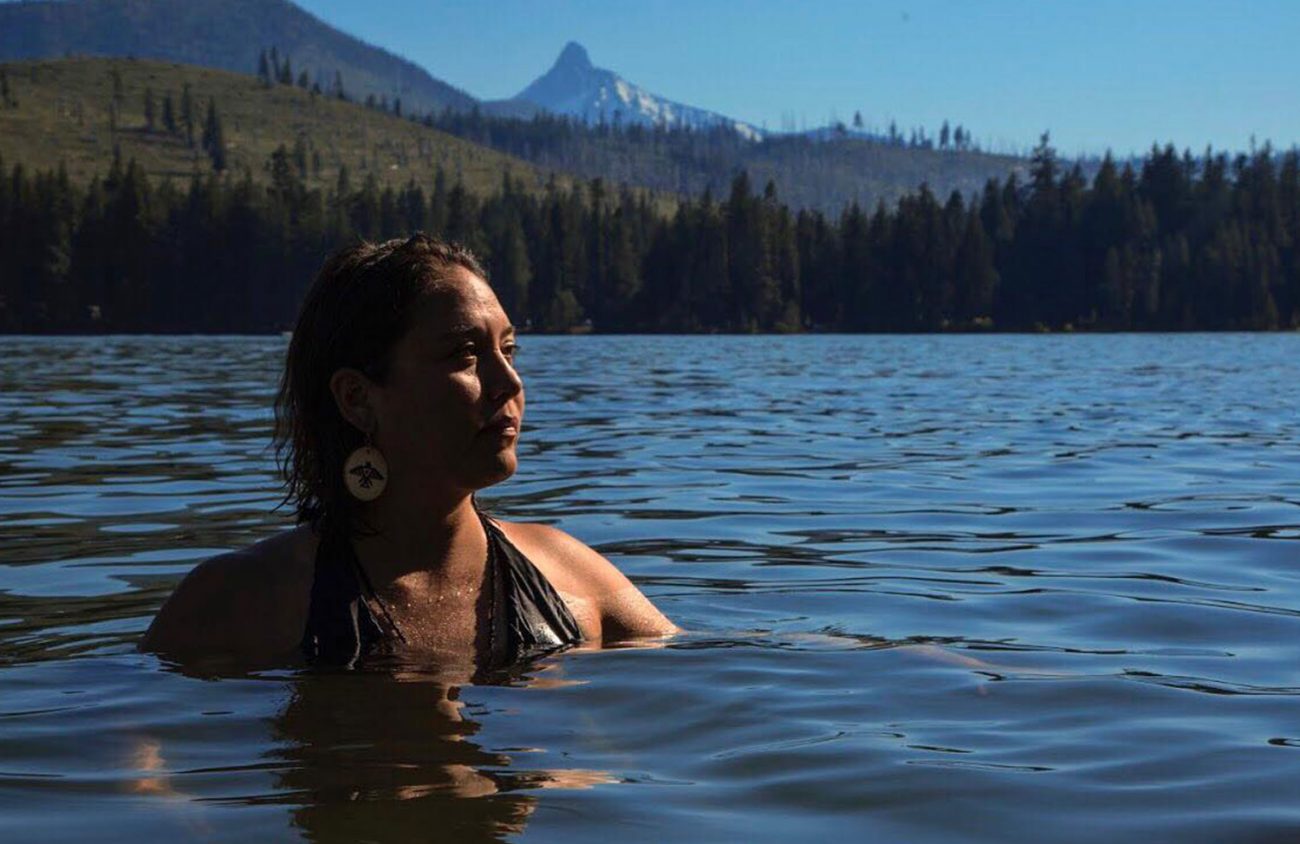Ka’ila Farrell-Smith, an artist, activist and member of the Klamath Tribe, was invited to showcase her work in Oregon’s Art in the Governor’s Office Program during November — coincidentally during Native American Heritage month.
She declined the exhibit because, as an activist in the fight against the Jordan Cove liquefied natural gas project and pipeline, Farrell-Smith says she cannot support Gov. Kate Brown when the governor remains silent on the LNG pipeline project.
A prestigious exhibit that often is considered a lifetime achievement, the Art in the Governor’s Office Program started in 1975 and honors selected artists of Oregon to showcase their artwork. The exhibit takes place in the reception area of the governor’s office at the Capitol and features three to four artists a year.
Farrell-Smith, who grew up in Eugene and graduated from South Eugene High School, is a contemporary artist whose work explores the relationship between Indigenous and Western paradigms. She works primarily in painting and does self-curated installations. Her work has been shown in the Portland Art Museum and the Jordan Schnitzer Museum of Art as well as in Washington, Montana and Italy.
“I was offered the governor’s show, and I declined,” Farrel-Smith says. “[Brown] hasn’t publicly picked a side on this issue that threatens my ancestral homelands and clean water, so my art will not be staying in her office in November for Native American Heritage month.”
The governor’s office then offered the show to Brenda Mallory, a Cherokee artist in Portland working in mixed media sculpture. She also turned it down. Mallory says the governor’s office did not inform her that Farrell-Smith had initially declined the art show.
“I cannot in good conscience fill the slot,” Mallory told the governor’s office. “I am aware that Ka’ila Farrell-Smith was scheduled and withdrew in protest of Gov. Brown’s continued silence on Jordan Cove. As both a resident of the Pacific Northwest and a citizen of the Cherokee Nation in solidarity with the Klamath Tribe, I do not support the LNG, and I urge Gov. Brown to also come out in her support against it.”
Eugene Weekly repeatedly asked the governor’s office for comment but did not receive a reply.
Farrell-Smith has been fighting the pipeline since 2017, when she returned from protesting the Dakota Access Pipeline on the Standing Rock Indian Reservation.
Farrell-Smith’s father was Alfred Leo Smith, a member of the Klamath Tribe and the respondent in a landmark federal court case, Oregon v. Smith. Smith was fired from his job for participating in Native American religious ceremonies using peyote. The case made its way to Supreme Court. Although Smith did not win, his case led Congress to amend the American Indian Religious Freedom Act.
The Pacific Connector Pipeline proposed by the Canadian fossil fuel corporation Pembina would ship natural gas 229 miles from Malin to the LNG Jordan Cove export terminal in Coos Bay. The gas would be shipped overseas to mostly Asian markets.
The proposed pipeline would cross nearly 500 wetlands, streams and major rivers such as the Rogue, Umpqua and Klamath and the ancestral lands of the Klamath, Siletz, Coos and Coquille Tribes of Oregon. The pipeline poses threats to wildlife and water quality and would be the largest source of climate pollution in Oregon by 2020, activists opposing it say.
